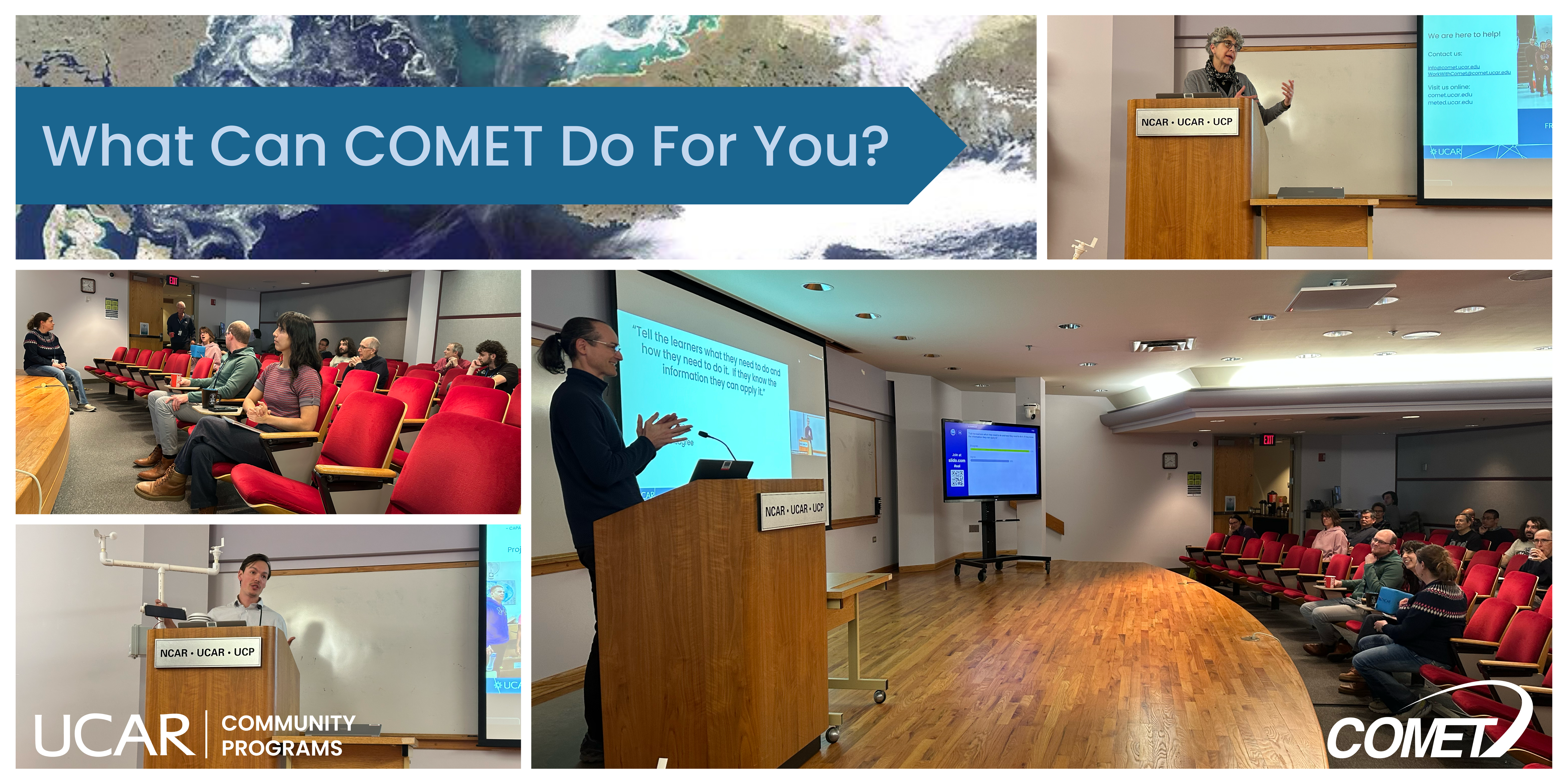What Can COMET Do for You?
What can COMET do for you? We’re glad you asked. From developing scientifically robust education and training courses, lessons, and more to the creation and implementation of innovative weather observation instrumentation, the COMET Program is here to support the atmospheric and geosciences community in various capacities.
The COMET Program has been supporting the atmospheric and geosciences community since 1989. During our 35-year career, we've developed an extensive portfolio of services across various education, training, and capacity development capabilities.
We presented an overview of these services to teams at the NSF NCAR Earth Observing Laboratory (EOL, which is available on EOL's YouTube channel.
Watch our presentation on What Can COMET Do for You? Courtesy of the NCAR Earth Observing Laboratory.
Short on time? Here's a summary of the talk’s key highlights to shed more light on how we can build expertise, together.
Presentation Highlights
The COMET Program is best known for MetEd, our flagship capability. With almost 1,100 free online lessons, courses, and other resources across the atmospheric and geosciences—and with almost one million registered users—MetEd is a well-established platform on which to house education and training content.
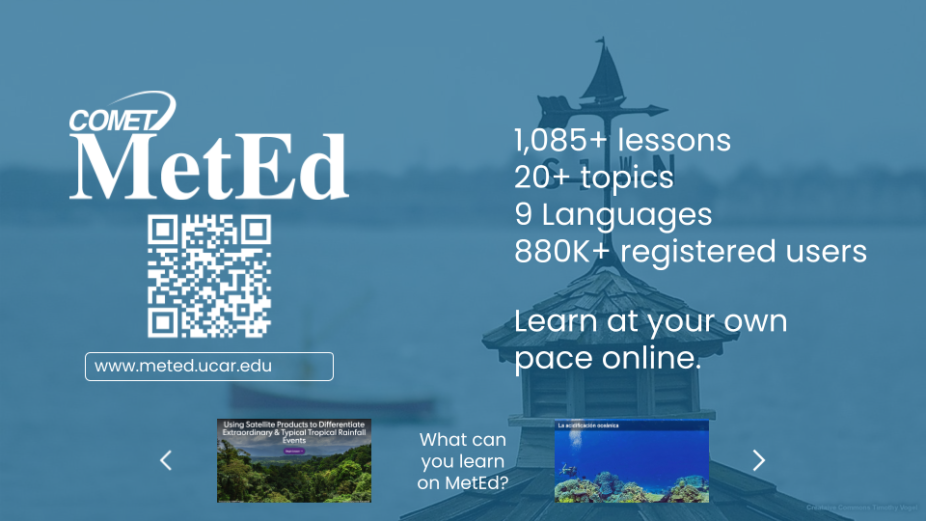
Our MetEd platform offers free online courses, lessons, and other education and training resources on numerous atmospheric and geosciences topics.
We're also excited to announce the next evolution of MetEd later this year via a new learning management system (LMS). Beyond offering even more powerful tools and features, organizations and programs will be able to host their own education and training materials in a portal that is fully branded and customized to their needs. More about this new LMS will be coming soon!
COMET’s Approach to Educational Design
Our team of educational designers immerse themselves in pedagogical research and incorporate proven approaches for learner engagement, comprehension, and retention to all of our education and training products. For example, our learning materials include motivators to attract and maintain learner attention; spaced and varied practice to reinforce learning; and memorable, real-world scenarios that take advantage of context-dependent memory. These approaches work together to create learning experiences that engage the learners in meaningful, memorable, and motivational activities.
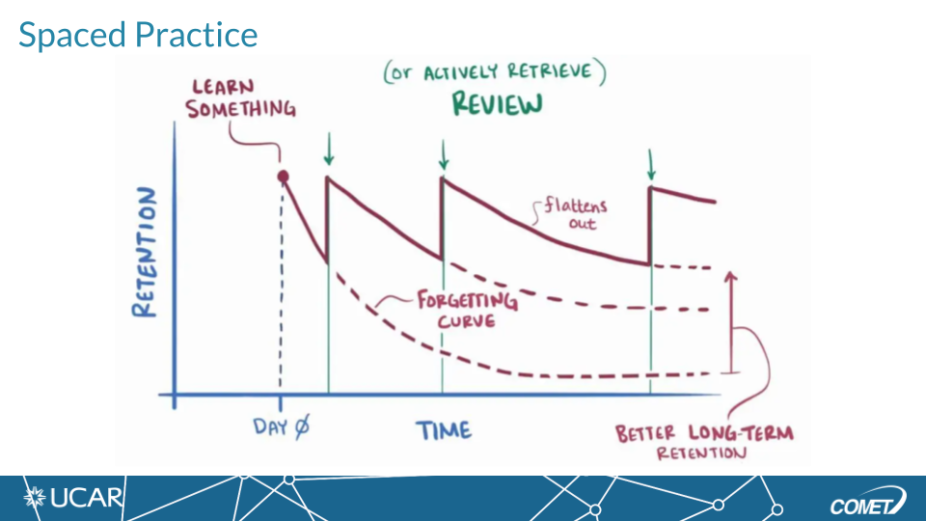
The graphic demonstrates the forgetting curve that typically occurs after we first learn something new and how, with spaced practice, the curve can begin to flatten out as learners retain knowledge longer.
COMET’s Education and Training Resources
COMET works with partners to develop customized learning experiences in the format that works best for them, including online, hybrid, and in-person learning.
Online Training Simulations
Vital to COMET’s learning approach is to provide learners with experiences that simulate real-world scenarios that actually prepare them for their work. An example of this for online learners included an interactive model of an EXO2 Sonde, an instrument commonly used by the U.S. Geological Survey (USGS) hydrotechs to measure water quality. This instrument is expensive, so a high-fidelity model on which new techs can practice without fear of causing damage is ideal.
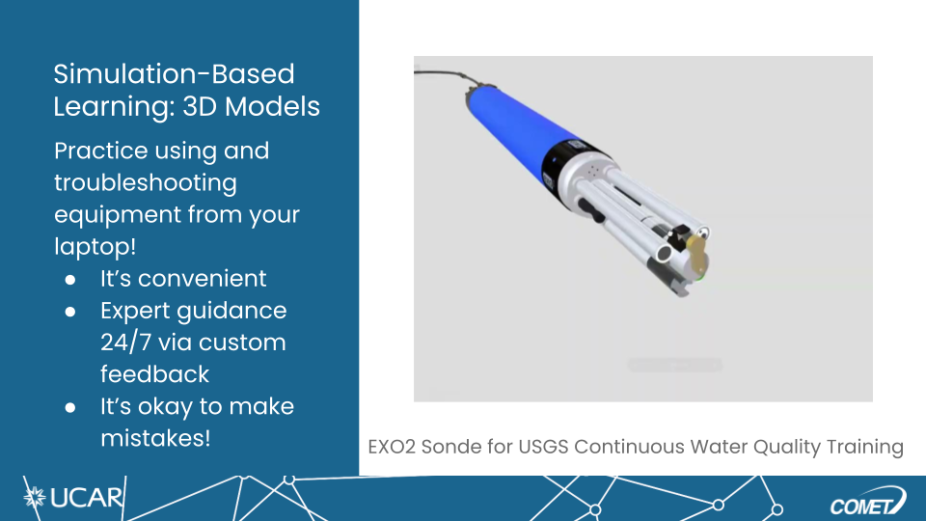
Interactive models, such as this EXO2 Sonde, are a safe and convenient way for learners to familiarize themselves with the instruments they'll use (without the risk of breaking anything).
In-Person Learning: Courses and Workshops
For our in-person learning capabilities, our team travels to learners wherever we're needed. We also offer training at our COMET Classroom in Boulder, CO.
A great example of our in-person capabilities is the revamped training COMET developed for the National Hurricane Center (NHC) we held in Miami, FL. During this workshop, learners from across the Caribbean learned how to interpret NHC products, produce a localized forecast, and communicate with various audiences via a simulated hurricane.
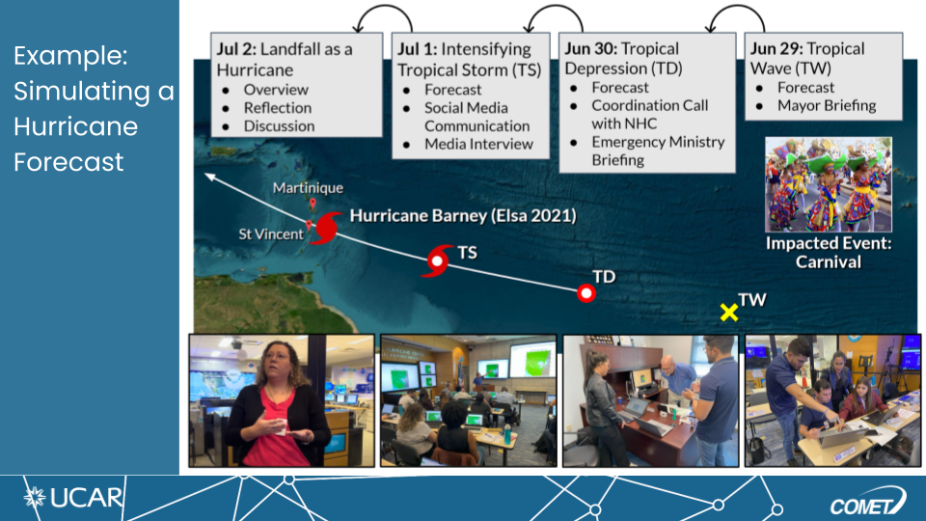
Meteorologists from across the Caribbean worked through a simulated hurricane during the National Hurricane Center workshop revamped by COMET.
COMET also developed a synchronous Applied Numerical Weather Prediction (NWP) course for Environment and Climate Change Canada which started as an in-person training workshop and has since moved to an online asynchronous course that is required for all ECCC weather forecasters.
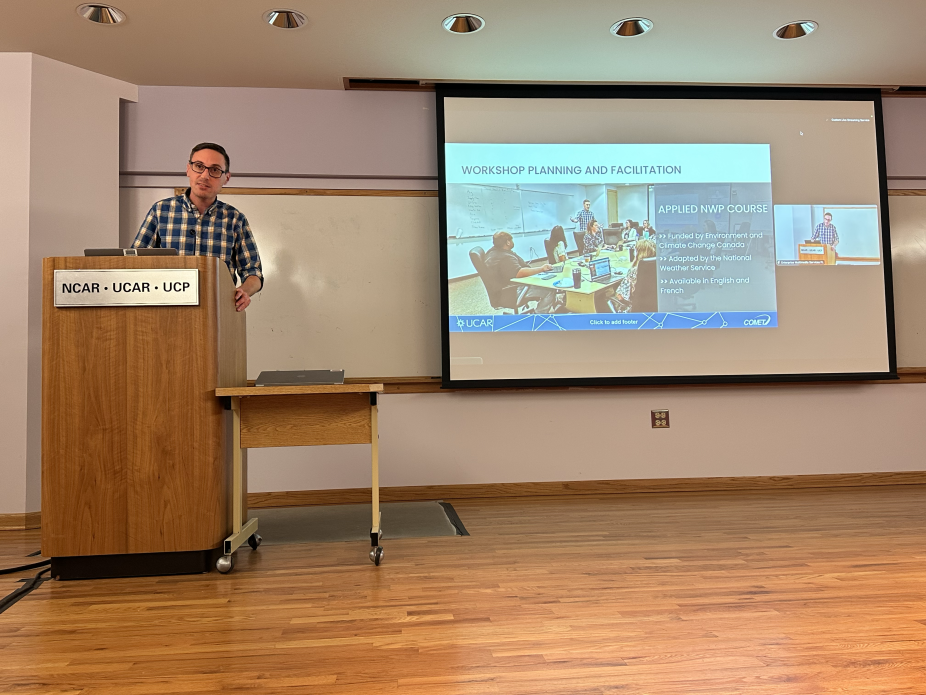
COMET Scientist Adam Hirsch discussed the development of in-person courses and workshops during the EOL talk.
Assessments Development
Assessments are key to our understanding of how to support our learners with engaging and meaningful learning. We incorporate assessments into our learning experiences so we can help learners identify their strengths along with areas that may need improvement.
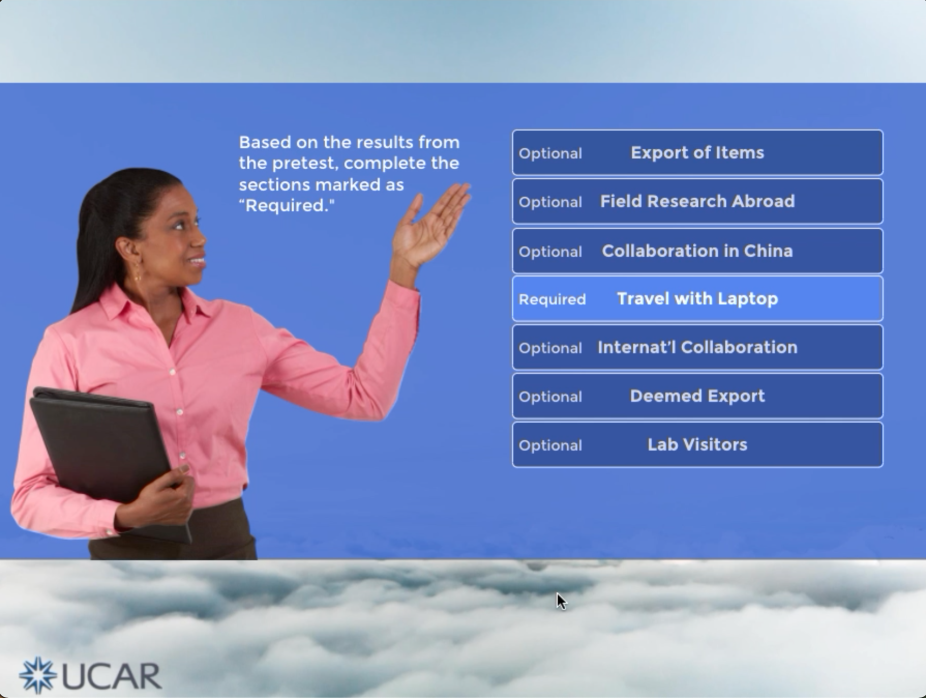
We currently provide learners with pre- and post-assessments within our lessons, and we use these assessments to iterate our lessons. In addition to these assessments, the new MetEd platform will enable our education designers to dive deeper into students’ interactions with the learning materials, identifying common mistakes as well as areas of improvement.
Innovative, Low-cost Instrumentation
Another key capability in our portfolio is the COMET Innovative Capacity Development Program (ICDP). This program is best known for our 3D-Printed Automatic Weather Stations (3D-PAWS) initiative, which provides low-cost, easy-to-maintain weather stations to rural and data-sparse communities. Our ICDP team travels to various locations to train meteorological services on how to fabricate, build, and maintain these low-cost weather stations.
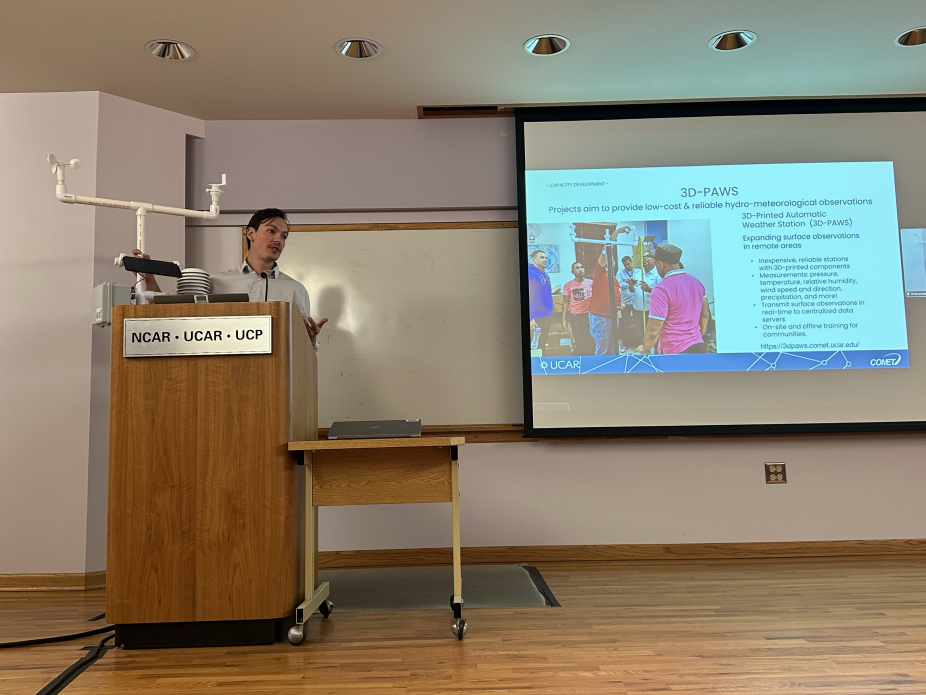
COMET Engineer Will Nicewonger showcases part of a 3D-Printed Automatic Weather Station (3D-PAWS) developed by COMET.
FAQ: Funding, Updating Lessons, and More!
How is COMET funded, and how does this translate to other programs working with COMET?
Currently, our funding comes from longstanding clients, such as the National Oceanic and Atmospheric Administration (NOAA) and the National Weather Service. Clients come to us from across the globe and can range from meteorological services, non-profit organizations, professional organizations, interest groups, and more.
With the upcoming release of our new MetEd learning management system, we’re exploring adding “pay-for-play” option for customized experiences and packages.
How does COMET integrate new science and pedagogy into our existing lessons? Generally, our sponsors reach out to us immediately with update requests when they roll out new tools or incorporate new research. If we don’t hear from our sponsors, we’ll reach out to inform them of the areas in which the lesson needs to be updated, and we’ll work with them to incorporate any updates.
How big of an audience should one have in order to justify creating an online lesson or running a workshop? We’ve done lessons and workshops for audiences of all sizes, from 10 or fewer to over a thousand. This depends on how niche the topic is and who will need the training.
Work with COMET
Do you want to learn more? Book a presentation with us here! This can be fully online, in-person, or hybrid.
Interested in working with us? Reach out to WorkWithComet@comet.ucar.edu.
Subscribe to our newsletter!
